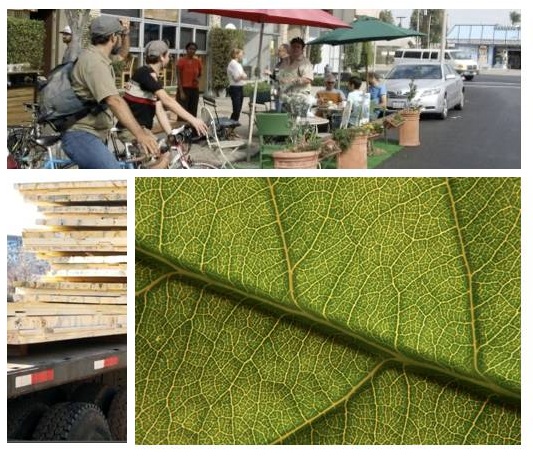 Placemakers describe the new incrementalism. BLDG Blog illuminates a memorial to a buried village. Perkins+Will looks down. Streetsblog looks at public space proposals for Midtown East.
Placemakers describe the new incrementalism. BLDG Blog illuminates a memorial to a buried village. Perkins+Will looks down. Streetsblog looks at public space proposals for Midtown East.
The new incrementalism. Howard Blackson blogs about how the latest design trend is designing a place to be realized in very gradual stages. Not in terms of planning for phases built out in a predetermined sequence, but about individual lots changing and evolving over time.
Blackson discusses this slow urbanism as having three typologies:
- Blow-up architecture: a movable, removable or deflatable architecture that is the most temporary of any building type.
- A Movable Feast: The pre-fab shipping container, or modular construction type, is built to last but is able to be picked up and moved from place to place as needed.
- Tear down that bearing wall, Mr. Gorbachev: ‘Grow’ or ‘Go’ homes in which the idea of building a structure to be torn down and replaced by a comparable one isn’t an economic reality anymore unless land cost is not an issue.
Via Placeshakers and Newsmakers
Memorial to a buried village. Geoff Manaugh blogs about a new project by Bo Li and Ge Men, students of architecture at ETH Zürich, which proposes a kind of buried chandelier to memorialize lost villages in Switzerland—architecture destroyed by landslides, replaced by light.
The project reminds Manaugh of the odd memorial known as the Cretto di Burri, by artist Alberto Burri, in which an Italian village called Gibellina, destroyed by an earthquake in 1968, was replaced—or, rather, memorialized—by a field of poured concrete.
Via BLDG Blog
Don’t forget to look down. Pat Bosch of Perkins + Will blogs about how much you get to know about a city by looking down instead of up.
“For quite some years I have found myself looking down and discovering that sidewalks, streets, and pavers of cities may tell more about a city than its buildings. As an architect I have always looked up and across cities. I have tried to understand them as diagrams or rather intellectual masterpieces of urban planning, but sometimes the secrets of their essence and ethos lie silently in the tiles, bricks, and pavers of their sidewalks, plazas, streets, and courts.” –Pat Bosch
No ‘Flying Doughnut’ at Grand Central. Foster + Partners, Skidmore, Owings & Merrill, and WXY architecture + urban design unveiled proposals to remake public space in the Midtown East neighborhood of New York City, as the Bloomberg administration sets out to rezone the area for taller towers.
The three firms focused on the area immediately around Grand Central Terminal, because although it lies at the heart of the district, the public realm outside the station’s grand interior often leaves much to be desired. SOM’s proposal includes building a circular walkway above Grand Central, floating up and down between new skyscrapers on either side of the train terminal. In a panel discussion with the architects, New York magazine architecture critic Justin Davidson dismissed the concept as a “flying doughnut.”
Via Streetsblog

 Smoking and public space. Lessons from a pilot park(let) project . Business from beetle blight. Consequences of turning on a light.
Smoking and public space. Lessons from a pilot park(let) project . Business from beetle blight. Consequences of turning on a light.